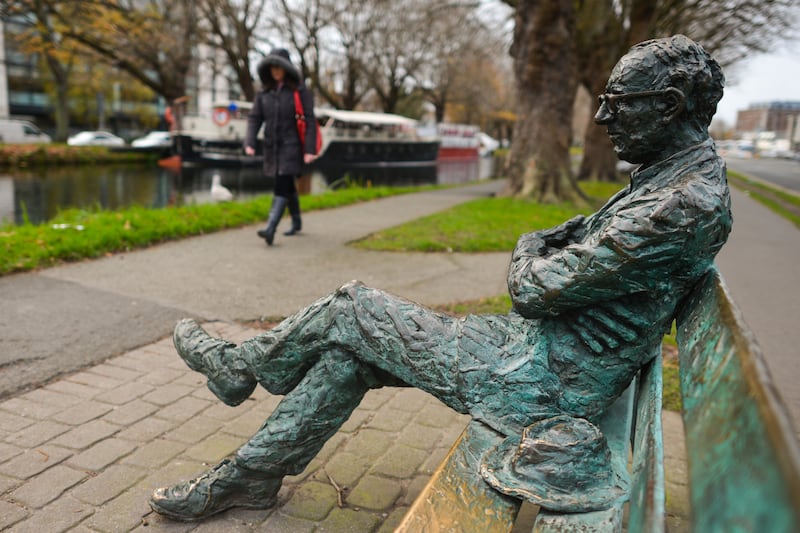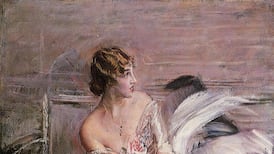It’s a dubious claim to fame, perhaps, but it seems that one of the Irish language’s most enduring gifts to English is the word “phoney”.
Dictionaries still tend to declare it of “origin unknown” and trace it back only the US, where it emerged in its current form. Indeed, phoney was largely unknown in these islands until 1939, when it became suddenly embroiled in the second World War.
During the early months of that conflict, up to May 1940, not much happened on the western front. The Germans coined the word sitzkrieg (“sitting war”) to describe the situation. The French called it “drole de guerre”.
Churchill spoke of a “twilight war”. But it was the American “phoney war” that stuck, crossing the Atlantic before any US troops did and invading British and Irish English in the process.
READ MORE
Various folk etymologies were advanced to explain the adjective, the most obvious being that it was a variant of “funny”. A link with telephones was also suspected (and “phoning it in” is today considered a sort of phoney work practice, although it was a perfectly respectable thing to do in journalism once, before email).
There were even suggestions of an eponymous jeweller called Forney, presumed infamous for selling fakes. That may have been closer to the true origins of the word, although the phantom Mr Forney has never been found.
It was the great New Zealand-born lexicographer Eric Partridge (1894 – 1979) who first tumbled on a connection with fáinne, the Irish for ring. This had been lurking in English for centuries as fawney or forney (which with the flattened Rs of London would have sounded the same).
There were telltale references, he thought, in the writings of Pierce Egan (1772 – 1849), an Irish-bred Englishman who became one of the first great sports journalists and an expert on popular culture.
[ Flying columnist – Frank McNally on a lightning visit to LeesideOpens in new window ]
In a novel entitled Life in London (1821), he had a character who “sports a diamond forney on his little finger’. Elsewhere, Egan also edited the revised 1823 edition of Francis Grose’s Classical Dictionary of the Vulgar Tongue, which included the term “fawney rig”.
That referred to a well-known confidence trick, described as follows: “A fellow drops a brass ring, double gilt, which he picks up before the party meant to be cheated and to whom he disposes of it for less than its supposed, and ten times its real, value.”
The fawney rig had been first mentioned in print as far back as 1781, in a book that also noted the existence of a shop in London where people could buy such rings for the purpose of “going on the fawney”.
But Egan provided the key, suggested Partridge, for dictionaries seeking the supposedly unknown origins of the 20th century phoney:
“That the fawney rig signified, literally, ‘the ring trick’, might well have insinuated a suspicion that, Irishmen being masters of the art and Irish confidence tricksters having invaded England, especially London, long before 1781, the origin of fawney lay in Ireland. In Ireland it lies. As so often before and since, Ireland was notably contributing to the gaiety of nations.”
Of how the fawney rig and the fawney men who practised it ended up in America and gave “phoney” to the language there, Partridge added: “The great Irish potato famine of 1845 drove many honest Irish people to the United States during the decade immediately following; with them, doubtless, went a number of less honest persons, including confidence men.”
I have never experienced the fawney rig in Dublin, London, or anywhere in the US. But about 15 years ago in Paris, as I attempted to cross a street near the Arc de Triomphe, a man of eastern European origin “found” a ring at my feet and asked if it was mine.
When I told him no, he pocketed it and walked away, before having second thoughts and insisting I take it, because the luck was meant for me. Then he suggested a small donation in return, so I gave him €2.
But when that was deemed too small, I told him to keep both money and jewellery. Which he did before brazenly, a few seconds later, finding the ring again, at the feet of another stranger.
I’m told the trick is common enough in France to have its own names there, including l’arnaque de la bague (“the ring scam”). So whatever its origins, it seems to extend well beyond the anglophone(y) world.

It’s funny that we also speak in English of the “ring of truth”. That has no relation to jewellery, I think. Nor has the old Irish song, originally an aisling, Fainne Geal an Lae.
There, the “bright ring of dawn” ends each verse of a ballad about a fair maiden being wooed by an insincere suitor. The roles were reversed when Patrick Kavanagh wrote Raglan Road to the same air. But the spirit of the original remained as his narrator too realises, in the ring of dawn, that the love he had thought true was false.
[ A despairing letter from a garda stationed in Tipperary in 1940Opens in new window ]









